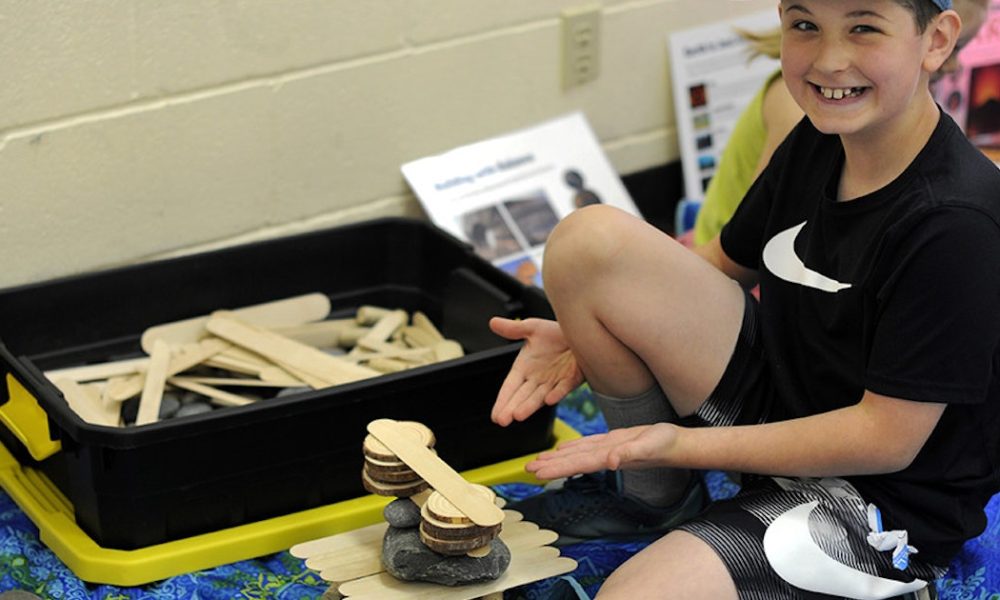 Owen Moran proudly displays his ”building with balance” structure during a Summer Reading Program event exploring what makes Earth so special and how to keep it that way. Gini Davis/The Creswell Chronicle
Owen Moran proudly displays his ”building with balance” structure during a Summer Reading Program event exploring what makes Earth so special and how to keep it that way. Gini Davis/The Creswell Chronicle
Ever wonder about Earth’s place in space, what makes our planet special and how we can keep it that way? About 100 children explored those questions during ”Our Place in Space,” a library Summer Reading Program activity presented by the UO Museum of Natural and Cultural History on July 3 at Creswell Community Center.
Morgan James, who’s making presentations for 110 Oregon libraries this summer, asked kids what they enjoyed doing outside. Answers included climbing trees, swimming and looking at stars. James talked about the role of the moon and other planets in stabilizing and shielding the earth and Earth’s unique combination of life-supporting resources, including its perfect size and proximity to the sun that provides light and heat; liquid, usable water; oxygen atmosphere; etc.
Given the importance of Earth’s resources to the people and other lifeforms inhabiting it, ”It’s very important to take care of the earth and keep it healthy,” James said.
At 12 to 15 stations, kids engaged in activities related to Earth’s resources and biodiversity and explored sustainable, caretaking activities.
In a timed race, kids used grabber tools to pick up the ”trash” polluting land and seas; counted how many drops of water they could place on a penny (water’s ”surface tension” in action); learned how they could save water in the shower; played with marble mazes; and colored and cut out paper earths, attaching pipe cleaner legs and weighting them with the planet’s challenges on one side and positive actions that support sustainability on the other, seeking ”balance.”
Kids compared Earth’s gravity to that of other planets in the solar system by picking up comparably-weighted ”apples”; stepped on a series of scales to discover what they would weigh on the moon, Mars and Jupiter; explored the role of gravity in the earth’s orbit using different-sized playdough balls, sticks and string; placed the solar system’s planets in the correct order and to-scale distance from the sun; and explored various types of energy.
In an exercise about biodiversity and why it matters, a lively game of Biodiversity KerPlunk invited kids to carefully remove colored sticks – representing plants, fish, mammals, birds, insects and bugs, reptiles and amphibians, and fungi and bacteria – one at a time, trying to keep the ”earth balls” inside the structure from falling.
A ”building with balance” activity also drew enthusiastic participation.
Suggestions provided to families on how to help the Earth included educating oneself about resource conservation issues; volunteering for community cleanups; biking more and driving less; conserving water; reduce/reuse/recycle; using less plastic; choosing sustainable seafood; planting trees; using energy-efficient, long-lasting light bulbs; and using nontoxic chemicals in home and office.
”The Museum of Natural and Cultural History is always one of the best activities of the summer; they are so organized and do a great job developing their program each summer to fit the SRP theme,” said youth librarian, Nick Caum. ”This year they had a tremendous amount of activities for families to try out – all of which were spectacular.”








